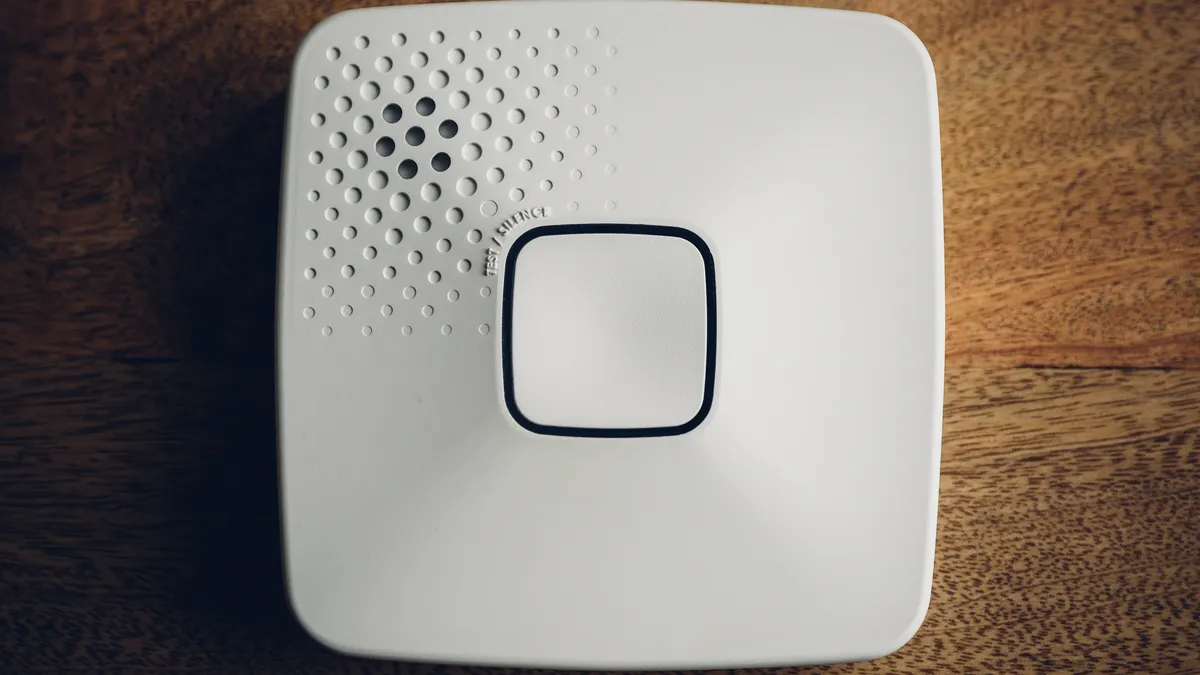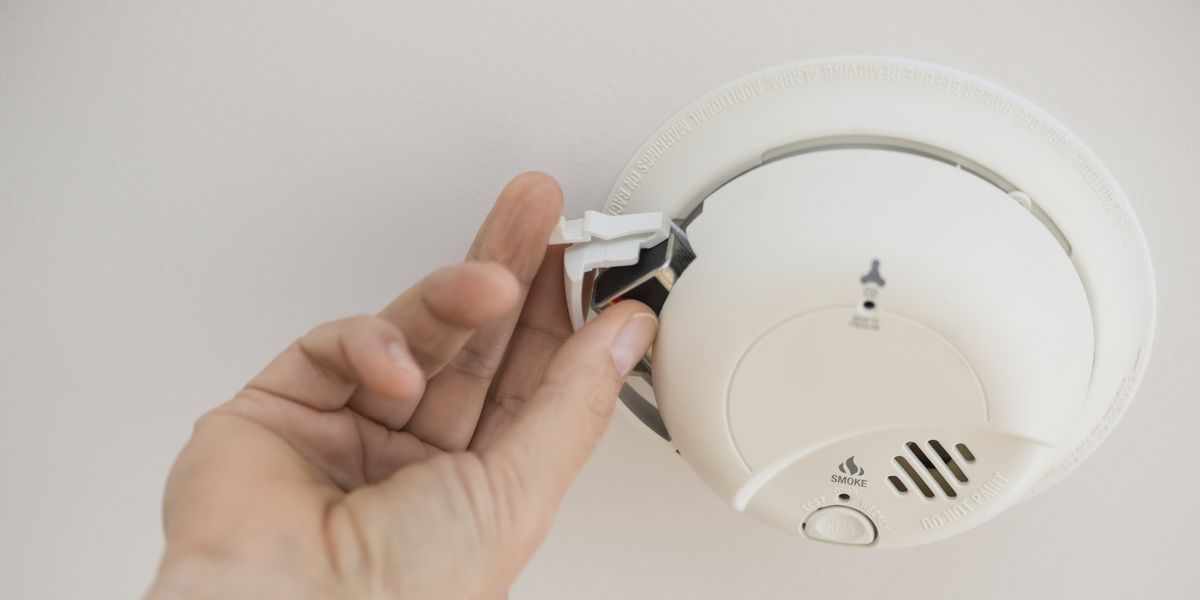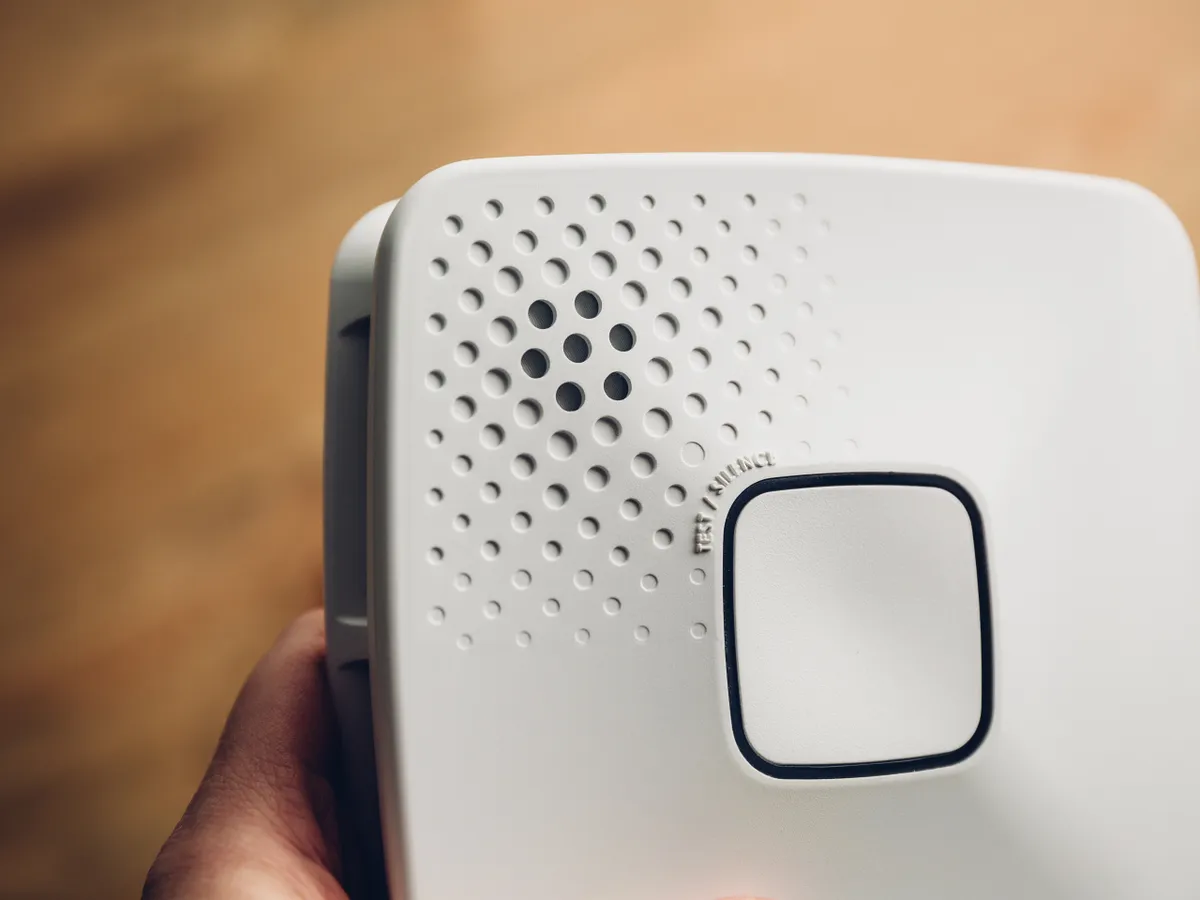I. Introduction

A. Importance of understanding how to silence a smoke alarm
Understanding how to silence a smoke alarm is crucial for every household. Smoke alarms are vital safety devices that can alert us to potential fires and save lives. Knowing the proper procedures for silencing a smoke alarm ensures a swift response and prevents unnecessary panic or confusion during an alarm activation.
B. Overview of the potential reasons for a smoke alarm activation
Smoke alarms can be activated for various reasons, including the detection of smoke particles in the air, high levels of heat, or a low battery. It is important to recognize the difference between a false alarm caused by something like cooking or steam and a true emergency that requires immediate action.
II. Understanding Smoke Alarms and Their Functions
A. Explanation of the purpose of smoke alarms
Smoke alarms are designed to provide an early warning system in the event of a fire. These devices detect smoke particles in the air, triggering an alarm to alert occupants of potential danger. By providing early detection, smoke alarms allow residents to evacuate quickly and contact emergency services, minimizing the risk of injury or death.
B. Types of smoke alarms commonly used
There are two main types of smoke alarms commonly used: ionization smoke alarms and photoelectric smoke alarms. Ionization alarms use a small amount of radioactive material to ionize the air, detecting smoke particles and triggering an alarm. Photoelectric alarms use a beam of light that, when interrupted by smoke particles, triggers the alarm. Both types of alarms are effective, but some households may have a preference for one over the other.
III. When and When Not to Silence a Smoke Alarm
A. The necessity of addressing a smoke alarm promptly
Promptly addressing a smoke alarm is crucial for ensuring the safety of occupants. Ignoring or neglecting an activated smoke alarm can lead to delayed response times in emergency situations, hindering evacuation efforts or firefighting measures. It is essential to take all smoke alarm activations seriously and respond promptly.
B. Scenarios when silencing a smoke alarm is appropriate

While it is important to respond promptly to smoke alarms, there are instances when it is appropriate to silence the alarm. These scenarios include occasional false alarms caused by cooking activities or steam from showers or high humidity. Additionally, routine maintenance, such as changing batteries or testing the alarm, may require temporarily silencing the alarm.
- Occasional false alarms due to cooking or steam
Smoke alarms can be particularly sensitive to smoke or steam produced during cooking activities. If a smoke alarm is activated due to cooking-induced smoke or steam, it may be appropriate to silence the alarm temporarily to avoid unnecessary panic or disruptions.
- Routine maintenance and battery replacement
Regular maintenance of smoke alarms, including battery replacements, should be a part of every household’s safety routine. During these maintenance activities, silencing the alarm temporarily is necessary to avoid prolonged noise or false alarms.
IV. Proper Steps to Silence a Smoke Alarm
A. Immediate response: Acknowledging the activation
One of the first steps in silencing a smoke alarm is to respond promptly when it activates. It is important not to ignore or dismiss the alarm, as it may indicate a potential fire or smoke-related danger. Immediately stop what you are doing and take the activation seriously.
B. Identifying the alarm causing the activation

After acknowledging the activation, it is crucial to identify which specific smoke alarm is causing the alarm to sound. This step helps in understanding the source of the issue and ensures that the correct alarm is silenced.
C. Silencing the alarm safely
- Pressing the designated silence button
Most smoke alarms have a designated silence or hush button. Pressing this button will temporarily silence the alarm without disabling its overall functionality. Locate the button on the specific alarm that is causing the activation and press it firmly, following the manufacturer’s instructions.
- Utilizing a vacuum cleaner or a long pole to deactivate hard-to-reach alarms
In some cases, the smoke alarm may be located in a hard-to-reach area, such as a tall ceiling or staircase. To silence these alarms, you can use a vacuum cleaner with a long hose attachment to suck in the smoke or particles triggering the alarm. Alternatively, a long pole with a soft cloth attached can be used to gently swipe at the alarm or cover the sensor temporarily.
V. Safety Precautions and Best Practices
A. Avoiding potential hazards while silencing the alarm
While silencing a smoke alarm, it is essential to ensure your personal safety and minimize potential hazards. Consider the following precautions:
- Do not remove the batteries or tamper with the alarm unless it is absolutely necessary or advised by a professional.
- Avoid touching hot surfaces or electrical components while attempting to silence the alarm.
- Be cautious of any smoke or fire hazards in the surrounding area.
B. Regular maintenance checks and battery replacements

To prevent false activations and ensure the optimal functioning of smoke alarms, regular maintenance checks are essential. This includes:
- Testing alarms regularly by pressing the designated test button.
- Cleaning the alarm periodically to remove dust and debris that may interfere with its sensors.
- Replace the batteries at least twice a year or as recommended by the manufacturer.
C. Seeking professional assistance if alarm malfunctions persist
If your smoke alarms continue to activate or malfunction despite regular maintenance, it is advisable to seek professional assistance. A qualified technician or electrician can assess the situation, identify any underlying issues, and provide appropriate solutions to ensure the alarm functions properly.
VI. Potential Risks and Consequences of Mishandling a Smoke Alarm
A. The importance of prompt response to true emergencies
Mishandling or ignoring a smoke alarm during a true emergency can have severe consequences. Smoke alarms are designed to provide early warning signs of potential fires and save lives. Failing to respond promptly and appropriately to an alarm can result in delayed evacuation or inadequate action, putting lives and property at risk.
B. Failure to address ongoing alarm activations
If smoke alarms continue to activate or false alarms persist, it is crucial to address the issue. Ignoring recurring activations may indicate underlying problems with the alarm system or environmental factors that need to be addressed. Taking proactive steps to address ongoing issues ensures the reliability and effectiveness of the smoke alarms in the event of a real emergency.
VII. Conclusion
Silencing a smoke alarm requires a timely and responsible approach. By acknowledging the activation, identifying the specific alarm causing the activation, and safely silencing it, you can take immediate control of the situation. It is vital to prioritize personal safety, follow safety precautions, and perform regular maintenance checks to ensure proper functionality of smoke alarms. By understanding and properly addressing smoke alarm activations, you can contribute to home safety and minimize potential risks and consequences associated with mishandling a smoke alarm.



